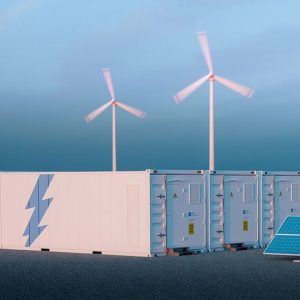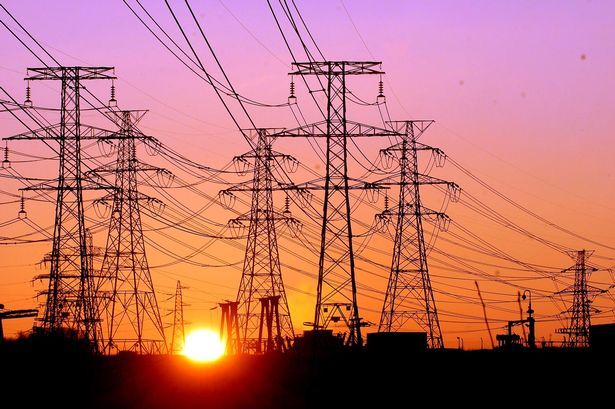The chemical industry plays a crucial role in providing essential materials and products for our society. Its growth is closely tied to population demands, with an increasing population correlating to rising greenhouse gas emissions. According to data from the International Energy Agency, global CO2 emissions from energy combustion and industrial processes increased by 6% in 2021, equivalent to 36.3 gigatons of emissions.
Chemical manufacturing processes for plastic production, such as ethylene cracking units and related downstream processing plants, as well as ammonia and methanol plants, involve various energy-intensive processes requiring substantial fossil fuels as energy sources. These processes release significant amounts of greenhouse gas emissions, contributing to the industry’s carbon footprint. The combustion of fossil fuels for steam and electricity further amplifies energy-related emissions.
Fortunately, the chemical industry is implementing various strategies to achieve short-term and long-term goals towards net-zero objectives. Over 78% of the energy used in the chemical industry relies on fossil fuels, providing a pathway for decarbonization through electrification. Approximately 30% to 70% of energy usage in industries can be electrified. Combining electrification with low-carbon processes is a feasible and crucial step in reducing CO2 emissions.

Decarbonization through Electrification
In the journey towards decarbonization, addressing readily available opportunities can achieve up to a 30% net-zero target. Implementing changes such as variable speed drives on various pumps and compressors, pinch analysis, chromatography column positioning, replacing pneumatic systems with electric actuators, and utilizing digital tools to monitor and optimize energy efficiency are some impactful transformations.
Further emission reduction requires a paradigm shift to implement long-term strategies for achieving net-zero goals; process electrification is one such transformative paradigm.
Electrification addresses two significant energy consumption challenges in chemical plants: compression (such as ammonia and ethylene compressors) and process heating. While some electrification solutions focus on compressors, widely known and adopted throughout the process industry, achieving a substantial reduction in carbon footprint requires comprehensive electrification, including flame heater electrification.
Although process heating is energy-intensive, optimized thermal integration in modern plants adds additional complexity related to energy rebalancing. For instance, electrifying the cracking furnace (ethylene) would significantly reduce the existing furnace’s heat recovery, necessitating additional electrification for feed preheating and steam generation.
Other key challenges and considerations include:
- Renewable or low-carbon-intensity electricity, a necessity for meaningful greenhouse gas reduction in most regions and many processes.
- The intermittent nature of renewable electricity, requiring some form of energy storage or hybrid energy arrangements, i.e., electric and thermal supply.
- A substantial amount (in gigawatts) of clean electricity, essential for the comprehensive electrification of chemical plants.
- Minimal modifications to retrofit existing furnaces, a critical aspect of adoption.
- Addressing functional and electrical safety concerns by providing a safe environment during the operation and maintenance of furnaces.
The economic viability of electrification varies across different processes and regions. Therefore, understanding and comparing alternative solutions is crucial, requiring accurate modeling of costs, carbon footprint, return on investment, and the overall impact on profitability.

Utilizing Industry 4.0 for Chemical Plant Decarbonization
When it comes to feasibility, economic considerations, and optimal configurations of chemical plant electrification, several areas can provide answers to key questions. Robust digital modeling and simulation of traditional, hybrid, or fully electric scenarios can help paint a comprehensive picture of the factory’s decarbonization. These models and simulations consider various aspects of electrification, such as power infrastructure, renewable energy generation, and the power grid.
To meet the green power needs of plants, a variety of approaches are necessary, including grid-supplied power and privately owned generation infrastructure. Power purchase agreements, virtual power plants, and industrial-scale microgrids (including hybrid renewable energy), batteries, storage, and small modular nuclear reactors are all part of the equation.
While the gigawatt-level power demand of electrified factories can be met in various ways, factories need to design and install technology to accommodate grid demand conditions. Unlike consumer demand response plans, most chemical processes cannot scale back or shut down operations without significant economic penalties.
Several methods to meet the power demand of electrified factories include:
- Hybrid furnaces providing flexibility by switching from full electric to partial electric, utilizing fuel combustion (fossil or hydrogen burners) when necessary.
- Dual-drive compressors offering flexibility, driven by electric motors or gas turbines.
- Battery storage and thermal storage are two additional elements making electrification flexible and large-scale feasible.
- An integrated energy management system is a key component of electrified factories, ensuring the coordination of the mentioned systems cohesively. It also plays a crucial role in monetizing flexibility. With the help of artificial intelligence, EMS can make complex decisions for optimal profit and carbon intensity while minimizing downtime.
Current process optimization systems will not be able to cope with the rapid changes in the power grid. A better approach is to use distributed neural networks and parallel computing to accelerate calculation speeds, enabling optimal decision-making for heat sources and fuel.
Performance expectations for electric furnaces are significantly better than combustion heaters, offering higher thermal flux, faster ramp-up, better controllability, and reduced coking, among other benefits. Precise control and optimization strategies for electrified reactors are rapidly maturing with the intelligent integration of advanced process control and machine learning.
Electrification means more process loads consume more electricity. Therefore, a lifecycle approach to the integration of power and process systems is more critical than ever.

The Path to Electrification
Schneider Electric assists customers in their electrification journey by evaluating factory assets and devising a blueprint for the gradual upgrade of electrical infrastructure at each step of the electrification process. To become leaders in innovation, companies can benefit from expertise in electric heating and control technology, flexibility, energy management, and the best electrical systems for electrified factories. Collaborating with chemical companies, furnace manufacturers, and original equipment manufacturers, Schneider helps electrify heaters and rotating equipment from small to large scales. The asset process electrification journey begins with small-scale pilot projects and consulting services to qualify assets for electrification. Developing short-term and long-term electrification roadmaps is crucial to electrifying small heaters, compressors, and large heaters.
While various decarbonization pathways exist in the chemical industry, Power 4.0 stands out as the most effective carrier of decarbonization. Although the electrification of key applications in the chemical industry, such as ethylene cracking units, is still in the pilot stage, end-users can begin their electrification journey by restoring fundamental knowledge.
The key is to formulate optimized action plans for power infrastructure, power procurement, and labor support to meet the electrification requirements. Our experts are ready to provide support at every stage of the process electrification journey, from planning and budgeting to implementation and achieving operational excellence. Explore more solutions we offer for the energy and chemical industry here.
